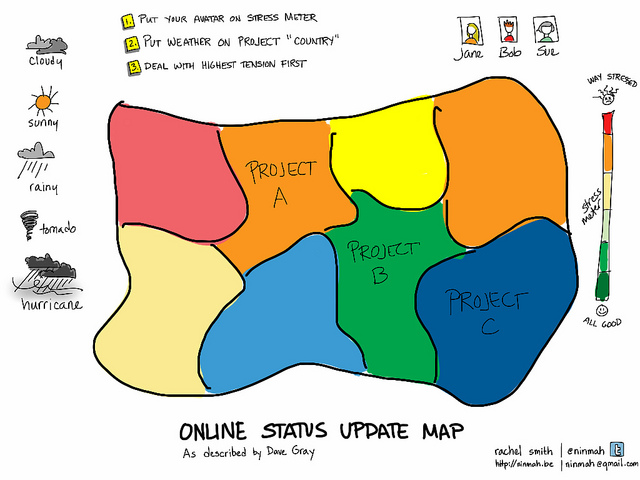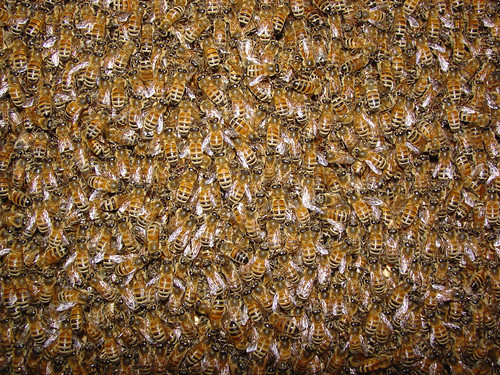 This September, George Siemens, Stephen Downes and Dave Cormier are hosting another Massively Open Online Course, Change: Education, Learning and Technology. This time it is massive in soooo many ways. In length (September – May), in number of participants, in number of guest facilitators – of which I’m one. So it is time to prepare. And I have NO idea what I’m doing!
This September, George Siemens, Stephen Downes and Dave Cormier are hosting another Massively Open Online Course, Change: Education, Learning and Technology. This time it is massive in soooo many ways. In length (September – May), in number of participants, in number of guest facilitators – of which I’m one. So it is time to prepare. And I have NO idea what I’m doing!
Here are the three things they are asking for and here is my draft. Your feedback is NEEDED!
1. A 500-1000 word overview of your work, why it’s important, and what you see happening next in that field. (We will compile these in an ebook).
Hm, of my work? That means I’d have to DEFINE my work. Without blabbering for hours, I’d say a couple of things about my work and I’m not sure it is entirely relevant in this context. I help people connect, communicate and get things done. And no matter how you slice it, these always involve learning but we are rarely talking about learning. So I decided the theme for my week would be “Triangulating, weaving and connecting our learning.” So I have to write 500 words on this. Hm. Let’s try this and get some feedback from you. It’s still 159 words over, but I trust you’ll help me.
While we most often pay attention to “learning” in the contexts of organizations and institutions devoted to learning, the work I do out in the world is all about learning. Interestingly, we rarely talk about learning. We are learning as we work, play, and fulfill the myriad of roles in our lives. What I learn as a grandparent impacts my conversations with clients on organizational development. What I learn playing with my new iPad informs my graphic facilitation practice. Who I learn with in one context informs the other contexts. It is a rich tapestry of connections.
What I’d like to explore during my week is how we become a little more conscious of these connections. What practices help us tap the richness of our multiple contexts and roles as learners in the world. From international agricultural research to the neighborhood garden patch, learning is everywhere.
As a little background to these wooly wonderings, let me share three stories. That’s the best way I can think of to share my “work” and why it might have relevance for our conversations.
1. Connecting people accelerates learning AND turns traditional structures on their heads. In 2000 I got involved in a small grant project in the Southern Caucasus, run by a small Vermont based nonprofit seeking to connect small business owners in three post Soviet countries using the Internet. In three countries with less than 10% internet penetration at the time. Two of whom were (and are still) at war with each other. As you might guess, few of the entrepreneurs benefited, but the three country managers connected with each other in new ways, giving sufficient support to learn new things quickly and more easily than before, support each other in taking risks and rapidly iterating towards some amazing innovations. Being connected changed their leadership experiences and increased their learning more rapidly than a typical “country program manager” might. They all went all to lead amazing programs there and in other places. At the same time their home office got a little freaked out… and they actually suggested (with some humor) that I had provoked a cult. But what turned things around was that their funders were so impressed, the home office eventually came around. But it turned things upside down for a while…
2. Small things matter. The practices of connecting for learning abound in the era of social media. We have more opportunity than time or attention. So it is interesting to observe that big changes often turn on little actions. Someone introducing two people who might share an interest. A small, sincere thank you for a contribution to a network. A shift in web meeting scheduling to better accommodate diverse time zones. I was at a gathering of one of my core international networks some years back and we closed the meeting by “going round the circle” to briefly share what we were learning. A woman I had just met said something about appreciating learning from me. I looked across this circle and thought “who is this woman?” Now that woman is one of my key learning and working partners, even though we are half a world apart. If she had not spoken up the connection would not have happened.
3. Jumping domain and practice boundaries shines new light on our learning. Years ago I used to doodle to endure long, bureaucratic meetings that were part of my job. People started asking to have those doodles, as they reflected something in those meetings that resonated for them. Years later I have begun to do graphic facilitation – the use of visuals in group process. By stepping into a new practice – litterally and mentally, it has changed the way I connect with others and make sense of my interactions with them. Changing modes has changed my learning. This shows up again and again as I work in new domains and parts of the world. Diversity enriches our learning.
2. A list of readings that you feel are important for people to read in order to understand your work and the field in which you conduct your research. Try to keep this list to your (the field’s) “top 5”
I’m thinking here of drawing a picture and being totally disruptive. I think this week is more about looking inward than outward. What do you think?
3. Suggested activities for course participants – i.e. what do you want them to do after reading your intro and the articles that you reference. Do you want them to debate a particular topic? create a concept map? produce a video? If you’re inclined, connect the activity to what others have done in the course previously so we can start to integrate themes.
As I read number three, I realized I’m not so interested in focusing this week on reading, but on reflection and conversation about the everyday practices that support learning across boundaries. So now I have to think about what sorts of activities would support this. It also makes me wonder if this topic is either too thin, or too broad.
What do you think? Lend a hand, please!



